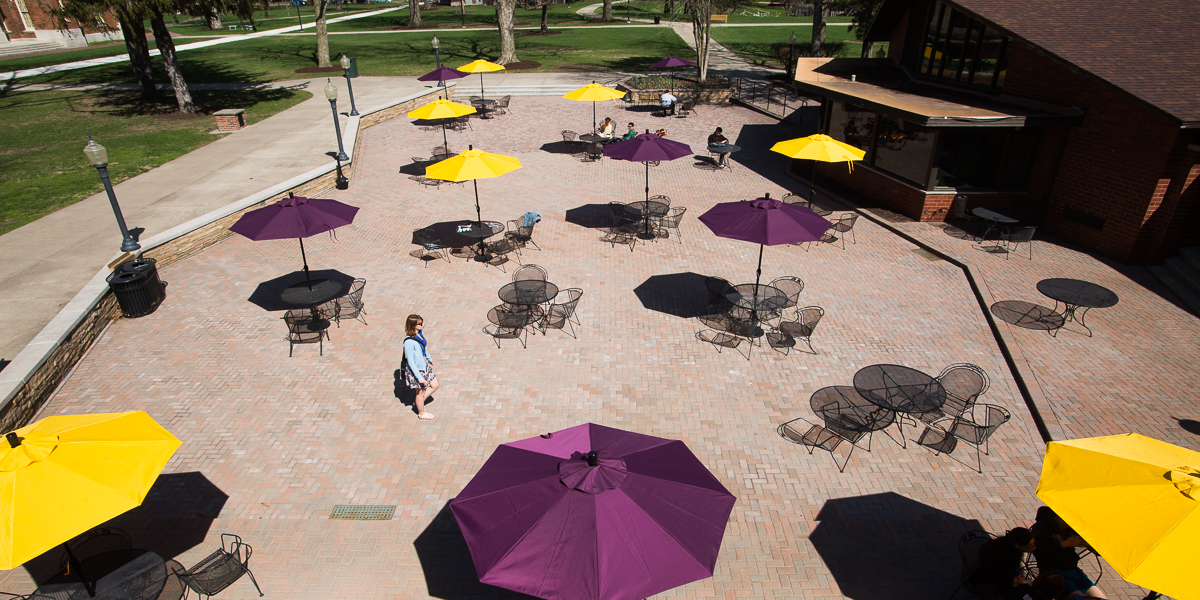

Venture Boldly

TRIO Celebrates 40 Years of Expanding Access
By Peter Bailley '74
In the words of founder George Washington Gale, Knox's primary mission is to "bring [a college degree] within the reach of every young person of industry and promise." This year, as the federally funded TRIO Achievement Program celebrates anniversaries locally and nationally, Knox Magazine looks at TRIO's success in helping Knox fulfill its commitment to access and achievement.
When people talk about the "income gap," they're usually referring to the fact that the income of wealthier Americans increases at a faster rate than everyone else's. There's another "income gap" that gets less attention, however, and it affects how likely one is to graduate with a college degree.
Since 1970, college completion rates for students from the wealthiest families have increased from 44 to 78 percent, according to the Indicators of Higher Education Equity 2015 report. Even though more students from low-income families (earning less than $34,000/year in 2013 dollars) are going to college, the graduation rate for these students is less than 10 percent.
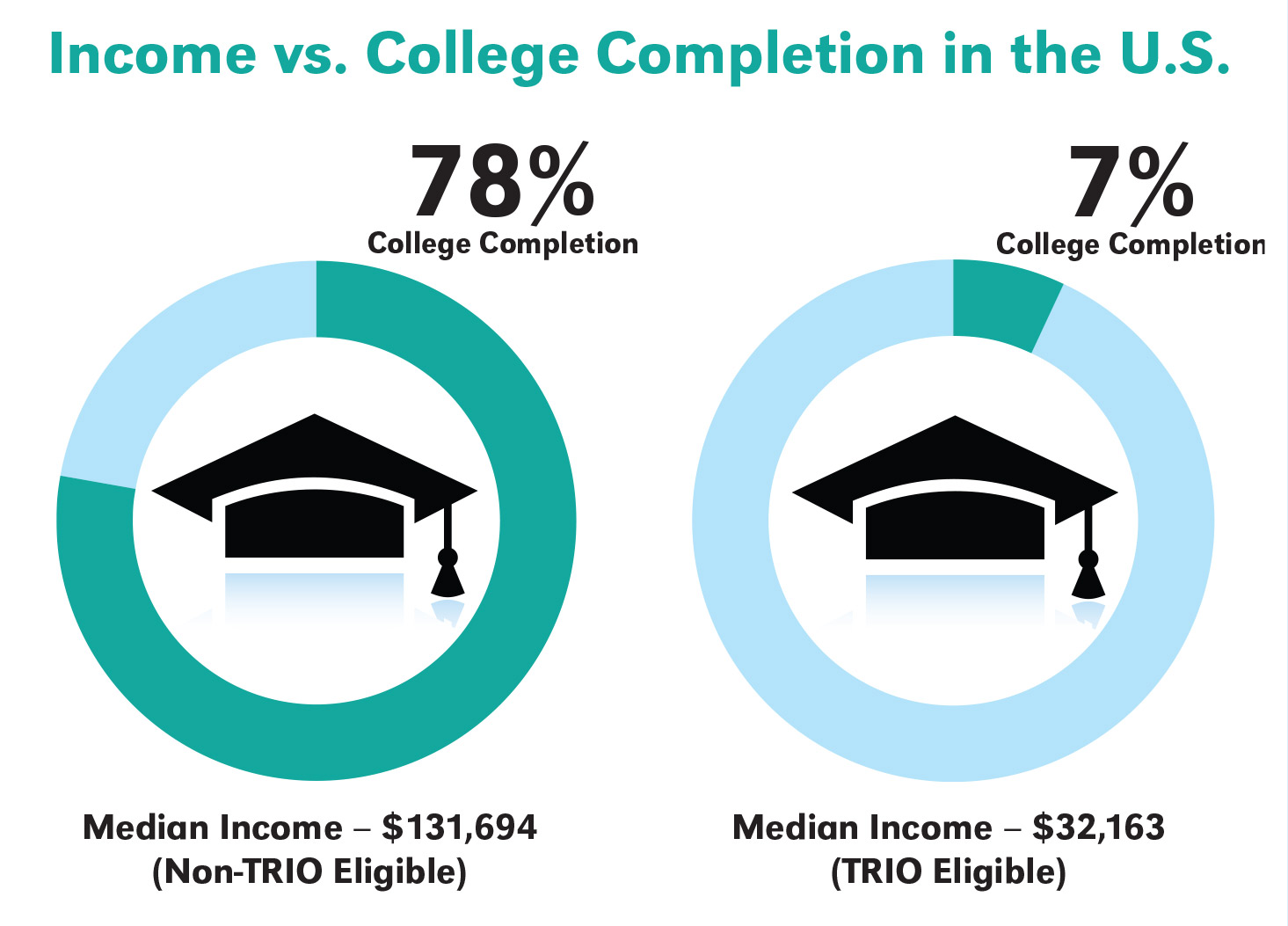 Knox was founded with the premise and the promise of trying to do something about unequal access to higher education. In the 1800s, when higher ed was only for the elite, Knox's response was the well-intentioned but unfeasible "manual labor" plan. More recently, and more successfully, Knox has responded with generous financial aid and, for the past four decades, with additional help from the federally funded TRIO program.
Knox was founded with the premise and the promise of trying to do something about unequal access to higher education. In the 1800s, when higher ed was only for the elite, Knox's response was the well-intentioned but unfeasible "manual labor" plan. More recently, and more successfully, Knox has responded with generous financial aid and, for the past four decades, with additional help from the federally funded TRIO program.
Created by the federal government to assist "low-income and first-generation college students, and individuals with disabilities," TRIO is celebrating its 40th anniversary at Knox this year and its 50th anniversary nationally.
Knox's TRIO Achievement Program launched in 1974 as the Educational Development Program with just 12 students and a federal grant of $9,000.
In 2014-15, a grant of about $300,000 a year -- a five year total of $1.5 million -- supports direct services to 165 students, including tutoring, mentoring, and co-curricular activities.
The need is even greater than can be met with the current federal grant. More than half of the Knox student body of 1,400 is TRIO-eligible, according to Risa Lopez, director of Knox's TRIO Achievement Program. The typical TRIO-eligible family at Knox has less than one-fourth the financial resources of the typical non-TRIO family -- $30,000 compared to $130,000 in annual adjusted gross income.
"Knox has a lot of TRIO-eligible students, both in number and percentage of the student body," Lopez says. "This is a tribute to Knox's very generous financial aid packaging. But the stark financial differences often leave TRIO-eligible students feeling alienated from their peers, and from the full dimensions of the Knox experience, both in and out of the classroom."
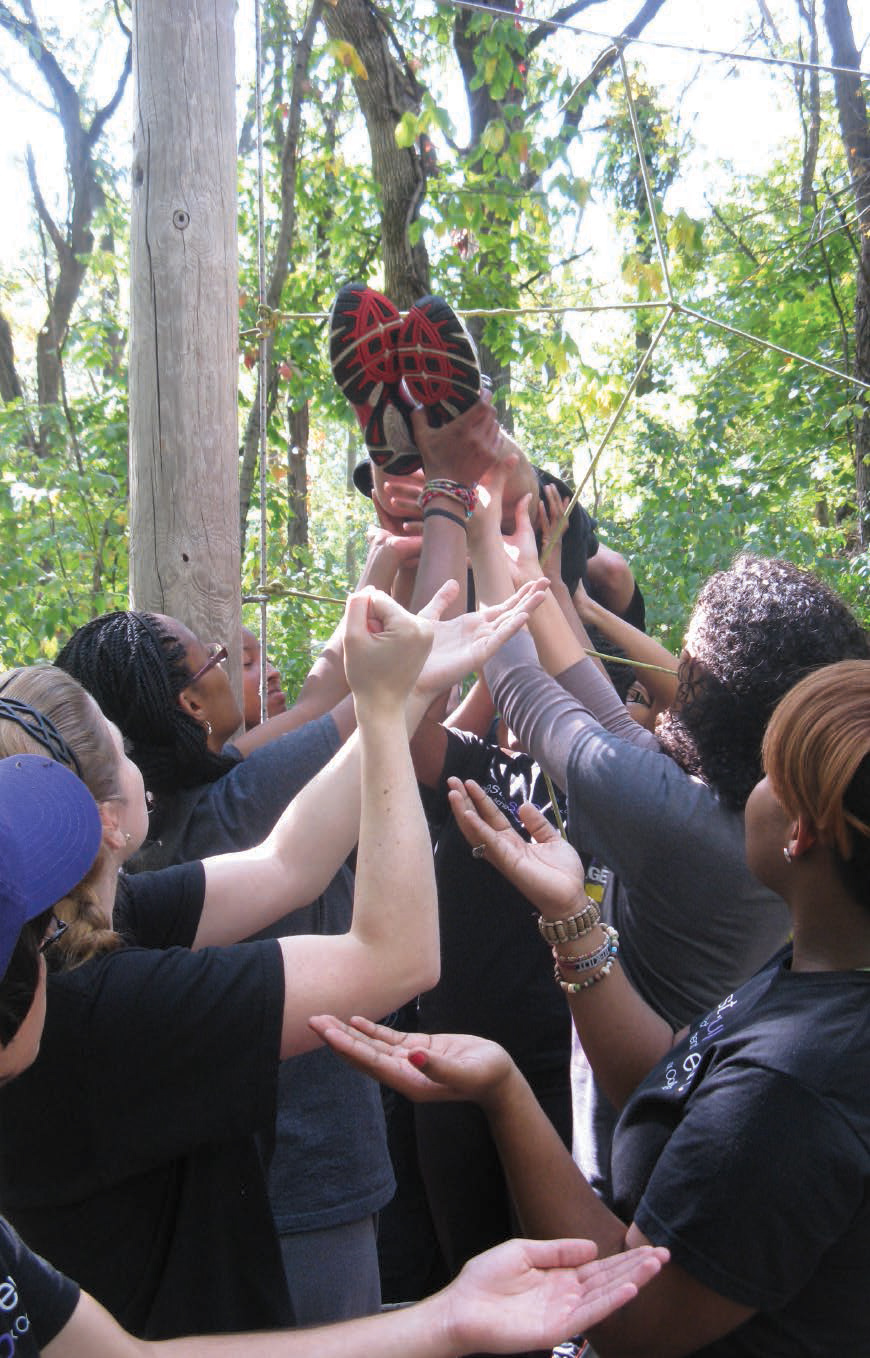
"My biggest fear about college was dropping out," said a TRIO student from Los Angeles, one of several whose video interviews have been recorded by TRIO staff and shown at an annual banquet. "I was really afraid that I would be one of those people who would come back and not have anything to show for all the hard work."
To help TRIO students make all of their hard work pay off, TRIO staff engage with students both individually and as a community. "Academics are our priority, within the context of a TRIO community," Lopez says. "It's connecting the students with each other, developing interdependence in addition to independence."
The emphasis on community is based on a subtle but significant understanding: at its core, modern higher education is an individual pursuit -- your work, your grade, your diploma. Helping first-generation, low-income, or learning-disabled students overcome obstacles is highly personalized. The assistance is -- because it has to be -- tailored to each student's needs. But on its own, that support does not connect students with each other. Despite best intentions and hard work, isolation can lead to lower retention and graduation.
Recognizing that TRIO-eligible students do better when the academic support proceeds hand in hand with a sense of belonging, Knox TRIO staff coordinate a wide range of activities. These include the fall kick-off picnic, low-ropes challenge course at the Horn Field Campus of Western Illinois University (pictured), a peer mentoring program group tutoring, Reading Day meals, and an annual off-campus cultural activity.
For the past several years, Knox TRIO students have engaged in an annual event that builds community among themselves while showing the importance of their personal histories. The students assemble meaningful objects in a cajita -- Spanish for "small box" -- then present and discuss their cajitas with each other. (Normally a private event, TRIO staff invited a few observers to the presentations this year, and several of the students agreed to talk on the record about their cajitas and the very personal issues they've dealt with.)
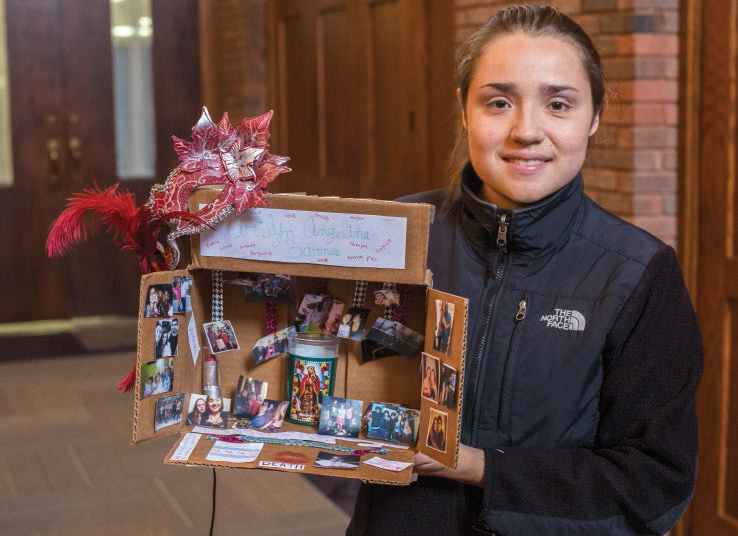 Marilyn Barnes's '17 (photo right) cajita was overflowing with people pictures. "I need people to survive. I don't think I'd be able to survive on my own. That's why I have so many [pictures of] people in here. My family and my friends, but only my close friends," she said.
Marilyn Barnes's '17 (photo right) cajita was overflowing with people pictures. "I need people to survive. I don't think I'd be able to survive on my own. That's why I have so many [pictures of] people in here. My family and my friends, but only my close friends," she said.
Her display also highlighted some provocative thoughts (translated from Spanish) -- "We don't live to work, we work to live." She explained, "I've been having a rough time recently and [the quote] inspires me to push forward."
Alex Contreras's '18 cajita contained a flag that once belonged to his grandfather, a native of Mexico who received the flag after he became a U.S. citizen. "He was very patriotic, very proud to be an American. I have the flag hanging in my room, to remind me of him."
His box also included lots of family photos. "My family is very important to me, very supportive," he said. [They] really pushed me to get the best education I possibly could. Going to school out of state was very important, and I'm proud to be here at Knox."
While only a small part of the TRIO program, the cajitas project highlights one of the most important parts of the program, community.
"Building community creates an environment where students feel safe to make mistakes, learning new ways of thinking and navigating the college environment, and striving to achieve their highest academic potential while having the unconditional support of their TRIO advisors," Lopez says.
After academics and community follow the other pillars of TRIO: financial literacy, including budgeting and navigating college financial aid; planning for careers and graduate or professional school; leadership development; and, finally, cultural enrichment.
The breadth of the program is informed by the director's own experiences as a first-generation college student. "Risa has worked her entire
professional career in TRIO programs. She has a real understanding of what it means to be a TRIO student," says TRIO writing coordinator Paul Marasa. With more than 20 years experience with the program at Knox, Marasa has experienced the evolution in the program's philosophy, exemplified in the name change from "development" to "achievement."
"We now have a clear goal of forming an academic community," Marasa says. "It's not a separate group of students who need academic remediation, but a community that's experiencing the kind of upward climb that every student needs."
Since 2006, Knox TRIO Achievement Program retention rates have exceeded 90 percent and graduation rates have increased from 70.4 percent to 87.5 percent. "In reality, our goal is 100 percent -- we work as best we can to retain and graduate every single program participant," Lopez says.
Bridging the gap takes literally thousands of hours of staff time, tutoring, mentoring, advising. Since 2006, contact hours have more than doubled, and would have nearly tripled if not for the 2013-14 federal budget sequestration.
"The stated goal for each Knox TRIO student is three contacts per term, but the reality for new first-year participants each fall is more than five times that amount -- 16 contacts in a 10-week term," Lopez says. Contacts include two with a TRIO staff advisor, two with a peer mentor, and two with the writing coordinator, along with weekly meetings for a half-credit course that concentrates on critical reading and writing.
"We develop meaningful relationships with students through intensive advising," Lopez says. "And we expect higher levels of participation from our students than in the past."
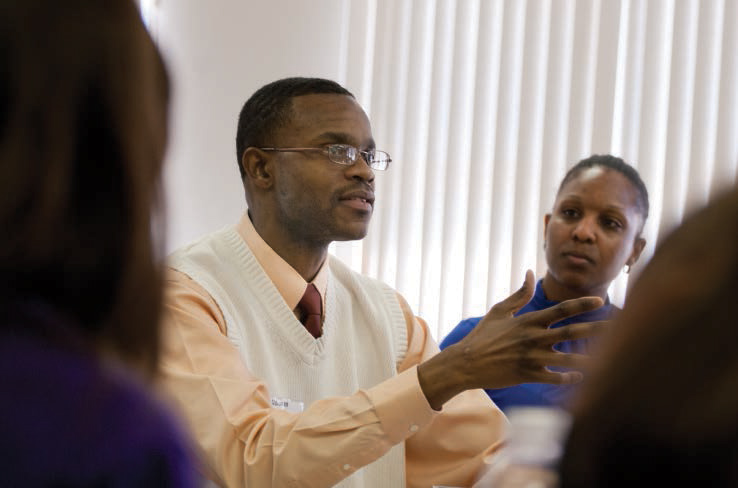 TRIO graduate Norman Golar '02 (photo right), assistant professor and chair of the English department at Stillman College and winner of a 2012 Alumni Achievement Award from Knox, recalls his own intensive writing sessions with Marasa: "We journeyed through my run-on sentences, my incoherent content, my wild imagination of comma placements, and the list goes on," Golar says. "He tapped into my struggles as a writer -- I thought that complicated writing was necessary. Thankfully, he helped me to rely on my oral communication: ‘What are you saying here?' he'd ask."
TRIO graduate Norman Golar '02 (photo right), assistant professor and chair of the English department at Stillman College and winner of a 2012 Alumni Achievement Award from Knox, recalls his own intensive writing sessions with Marasa: "We journeyed through my run-on sentences, my incoherent content, my wild imagination of comma placements, and the list goes on," Golar says. "He tapped into my struggles as a writer -- I thought that complicated writing was necessary. Thankfully, he helped me to rely on my oral communication: ‘What are you saying here?' he'd ask."
Looking back, Golar says, "I now understand Paul's focus on simplicity, as I assist my own students at Stillman to realize that writing derives from their speech, and that elegance derives from continual practice with reading and writing."
All that face time means that when students face challenges, whether personal or academic, TRIO staff are not scrambling to figure out "what's the problem?" -- they're ready to help students bridge the gap between aspiration and achievement, between opportunity and resources, between first term and finishing.
"We don't make decisions for students," Lopez says, "We provide them information and resources to make their own decisions."
In a video interview late in her senior year, TRIO graduate Krystle Liggins '09 talked about the uncertainty she faced when she came to Knox, whether she would stay, whether she would complete her degree: "After my first term, I wanted to transfer. I had some people I looked to as guidance, and they said, "You need to stay. We know this is best for you, and it's what you should do.'"
Unlike those who were telling her "what's best for you," says Liggins, now an educator herself in San Francisco, "I [also] talked to Paul [Marasa, her TRIO writing coordinator], and he said, "You'll have to deal with the decision that you make.' It made me feel okay about making the decision. If you find that people genuinely care about you ... supporting me in the decisions that I make for myself ... I couldn't leave that."
Several other College programs show that Knox, as an institution, is addressing the needs of TRIO eligible students:
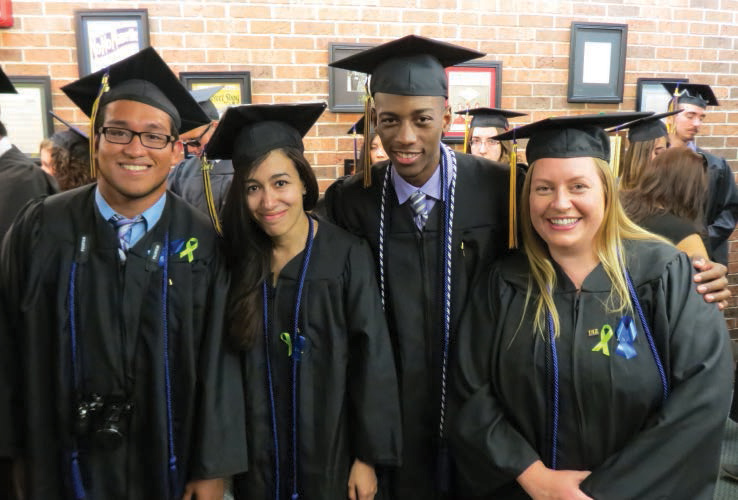
The TRIO Achievement Program is evaluated based on three objectives: retention, good academic standing, and graduation. The Department of Education defines success as the following:
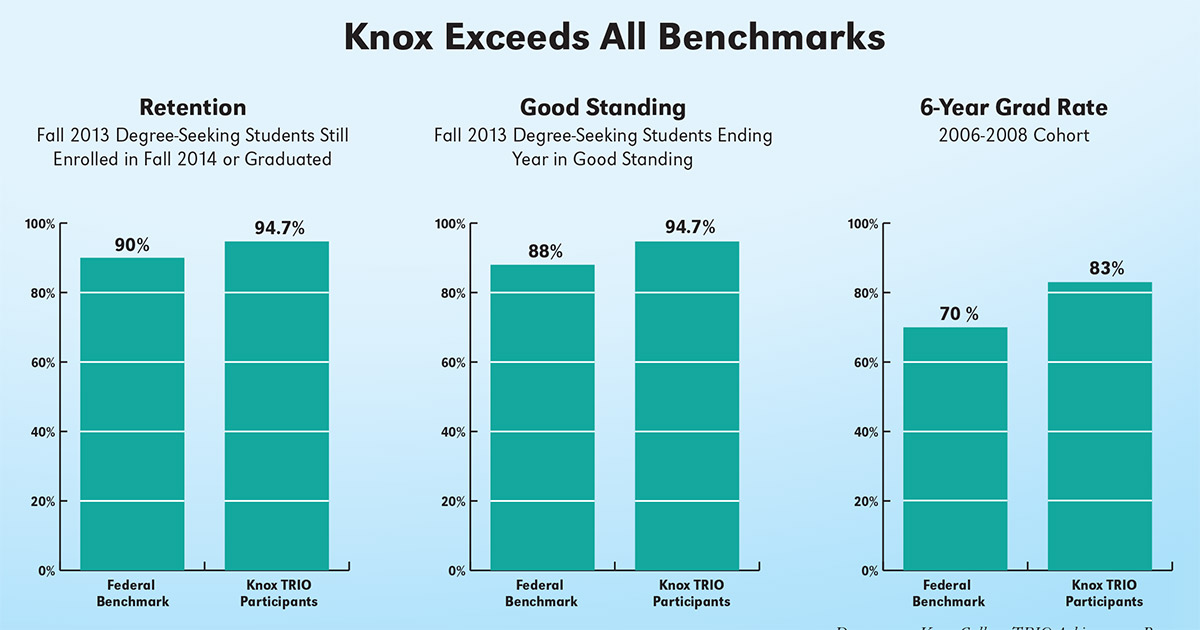
16K+
Alumni in our network
The Knox community extends to all 50 states and all but one continent.